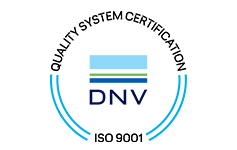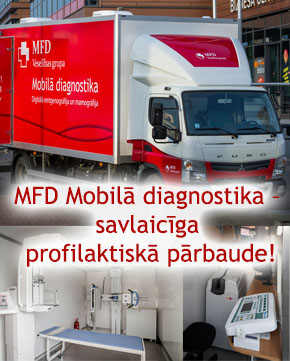Osteodensitometry
Osteodensitometry (DXA) – bone mineral density measuring method
This examination is carried out quickly, it is painless and simple. Bone density measuring is the basic examination in the diagnosis of osteoporosis. If in the bone density measurement patient is diagnosed with osteoporosis, doctors are able to prescribe state reimbursable medicine to treat it.
Bone mineral density can be measured as well by QCT (Quantitative computed tomography). QCT-assisted osteodensitometry has been shown to be useful in assessing the in vivo structural bone changes after THA. It has a high resolution, accuracy and reproducibility, thereby making it a useful tool for research purposes, and it is able to differentiate between cortical and cancellous bone structures and assess the bone/implant interface. This technique also provides valuable information about the pattern of stress shielding which occurs around the prosthesis and can show early bony changes, which may prove informative about the quality of implant fixation and surrounding bone adaptation. In conjunction with finite-element analysis, qCT is able to generate accurate patient-specific meshes on which to model implants and their effect on bone remodelling. This technology can be useful to predict bone remodelling and the quality of implant fixation using prostheses with different design and/or biomaterials. In the future, this tool could be used for pre-clinical validation of new implants before their introduction in the market-place.
Bone density measuring must be performed in the following cases:
- For all women 65 years of age and for all men over the age of 70.
- In women before the age of 65 and men before the age of 70, if there are factors that can reduce bone density (for example, smoking, excessive use of coffee, height reduction or thoracic spine pronounced curvature).
- For women before the age of 65, if there are factors that can reduce bone density (for example, menopause before 50 years of age, menstrual shortfall of more than one year before 42 years of age, body weight less than 58 kg or if the mother has had a femoral fracture before the age of 50).
- If you have already had a fracture resulting with minor injury or without injuries.
- If you are using medicine that can affect bone density (for example, glucocorticoids (prednisolone, methylprednisolone, or dexamethasone), medicine to reduce increased thyroid activity).
- If you have a disease that’s affecting bone density (for example, rheumatoid arthritis, overactive thyroid function, myeloma, chronic kidney disease).
MFD Outpatient hospital «Dziednieciba»
MFD Outpatient hospital «Pardaugava»
MFD Diagnostika, F.Sadovņikova iela 20












